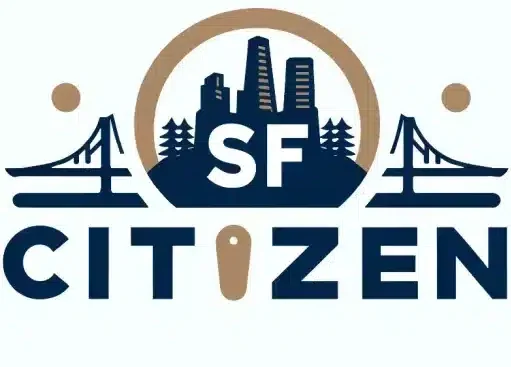The Cable Car Museum in San Francisco welcomes over 400,000 visitors annually, offering a fascinating glimpse into the city’s iconic transportation system. This free museum is housed in the historic Washington-Mason powerhouse, which has been in operation since 1887. The museum not only preserves the rich heritage of San Francisco’s cable cars but also educates visitors about the technology that keeps this unique mode of transportation running.
In This Article
Key Points
- The Cable Car Museum plays a vital role in preserving San Francisco’s transportation heritage
- The museum features exhibits and collections that showcase the history and technology of cable cars
- Visitors can learn about the inner workings of cable cars and their significance to the city’s identity
The Historical Significance of Cable Cars in San Francisco
Cable cars were introduced in San Francisco in 1873 by Andrew Smith Hallidie, revolutionizing public transportation in the city. These cars, powered by a system of underground cables, were instrumental in shaping San Francisco’s urban development and identity. The Cable Car Museum’s collections chronicle this history, showcasing the evolution of cable cars and their impact on the city’s growth.
Inside the Washington-Mason Powerhouse and Carbarn
The Washington-Mason powerhouse is the operational heart of San Francisco’s cable car system. This facility not only powers the cables that propel the cars but also serves as a maintenance hub for the fleet. The adjacent Carbarn houses and maintains the cable cars when they are not in service. Together, these buildings ensure the smooth functioning of the cable car system while preserving its historical integrity.
Exploring Cable Car Technology and Mechanics
Cable cars are an engineering marvel, and the museum offers visitors a chance to delve into their inner workings. You’ll learn about:
- The grip mechanism that allows the car to latch onto the moving cable
- The track system and its role in guiding the cars through the streets
- The evolution of cable car technology over the years
Interactive exhibits and knowledgeable staff make this learning experience engaging for visitors of all ages.
A Journey Through Time: Historical Artifacts and Exhibits
The Cable Car Museum houses an impressive collection of historical artifacts that tell the story of San Francisco’s public transportation. Some of the key exhibits include:
- Vintage cable cars from different eras, each with its own unique story
- Educational displays that trace the development of the city’s transportation network
- Rare photographs and documents that provide a window into the past
These exhibits offer a tangible connection to San Francisco’s rich history and the role of cable cars in shaping the city’s character.
Beyond the Museum: Cable Cars in San Francisco’s Landscape
Cable cars are more than just a mode of transportation; they are an integral part of San Francisco’s identity and tourism industry. The museum explores the connection between cable cars and other Bay Area attractions, such as Angel Island State Park and Golden Gate Park. Visitors can also learn about the role of cable cars in the city’s cultural events and parades, like the San Francisco Gay Freedom Day Parade.
The Museum Gift Shop: A Treasure Trove of Memorabilia
No visit to the Cable Car Museum is complete without a stop at the gift shop. Here, you’ll find a wide array of cable car-themed merchandise, including:
- Books and educational materials that delve deeper into the history and technology of cable cars
- Souvenirs and mementos that celebrate the iconic status of San Francisco’s cable cars
- Exclusive items that support the museum’s operations and conservation efforts
Whether you’re a transportation enthusiast or simply looking for a unique San Francisco keepsake, the museum gift shop has something for everyone.
Cable Car Museum as a Gateway to Other Bay Area Cultural Sites
The Cable Car Museum is just one of many cultural and historical attractions in the Bay Area. Its location and thematic focus make it an excellent starting point for exploring other nearby sites, such as:
- The Ruth Asawa sculptures that adorn the city’s streets and public spaces
- The Diego Rivera mural at the San Francisco Art Institute
- The African American Museum and Library at Oakland, which chronicles the history and contributions of African Americans in the region
By connecting visitors to these other cultural landmarks, the Cable Car Museum helps to create a richer, more immersive experience of San Francisco’s diverse heritage.
FAQ
What is the historical significance of the Cable Car Museum in San Francisco?
The Cable Car Museum preserves the history and technology of San Francisco’s iconic cable car system, which has been in operation since 1873. The museum’s collections and exhibits chronicle the evolution of cable cars and their impact on the city’s development and identity.
How does the Washington-Mason powerhouse and Carbarn contribute to today’s cable car operations?
The Washington-Mason powerhouse is the operational heart of the cable car system, powering the cables that propel the cars through the streets. The adjacent Carbarn serves as a maintenance facility for the cable car fleet, ensuring their smooth functioning and historical integrity.
Can you explain the basic technology behind how cable cars operate?
Cable cars are propelled by a system of underground cables. The cars use a grip mechanism to latch onto the moving cable, which pulls them along the track. The track system guides the cars through the streets, and the grip can be released to allow the car to coast or stop.
What are some of the key historical artifacts visitors can see at the Cable Car Museum?
The museum houses a collection of vintage cable cars from different eras, each with its own unique story. Visitors can also view rare photographs, documents, and educational displays that trace the development of San Francisco’s public transportation network.
How does the Cable Car Museum connect to other cultural and historical sites in the Bay Area?
The Cable Car Museum serves as a gateway to other nearby cultural attractions, such as the Ruth Asawa sculptures, the Diego Rivera mural at the San Francisco Art Institute, and the African American Museum and Library at Oakland. By highlighting these connections, the museum helps visitors explore the rich and diverse heritage of the Bay Area.

